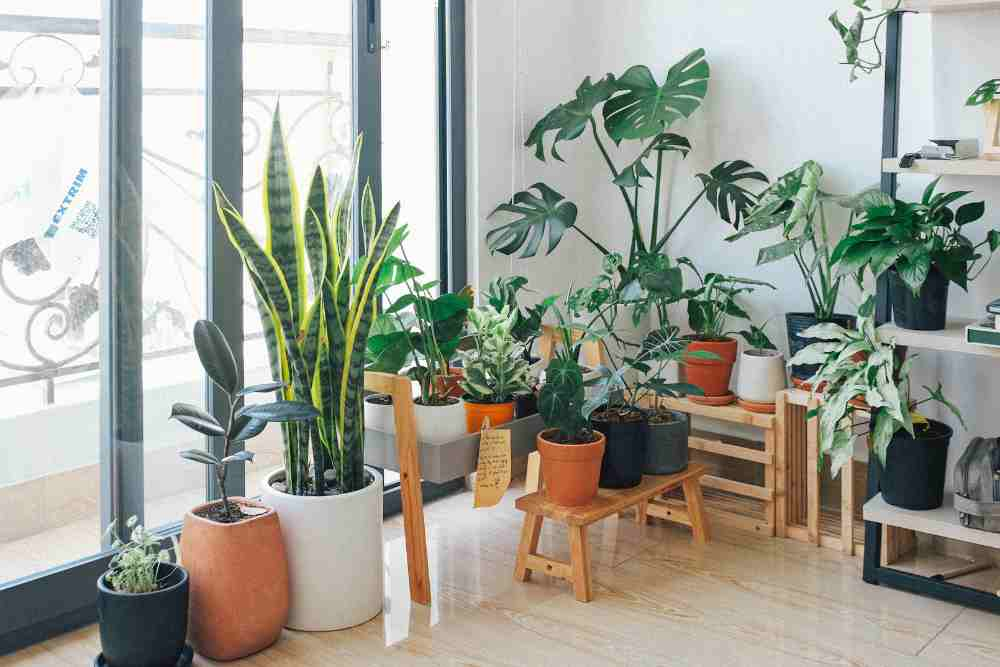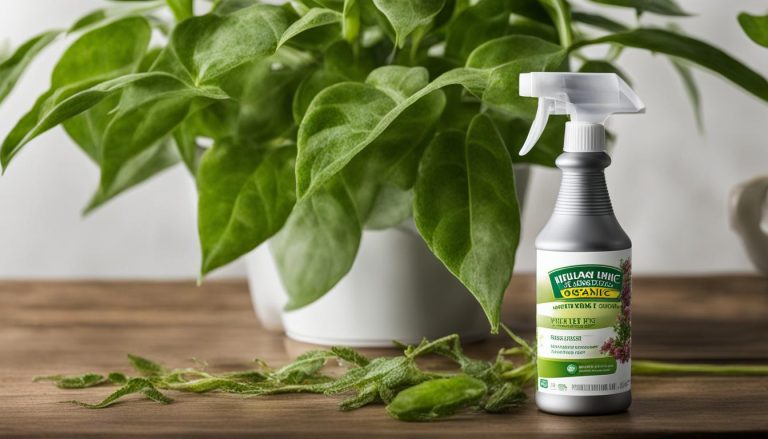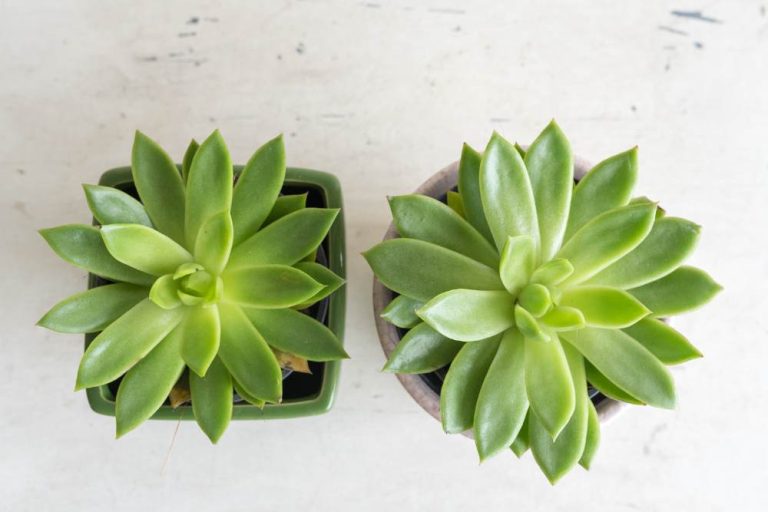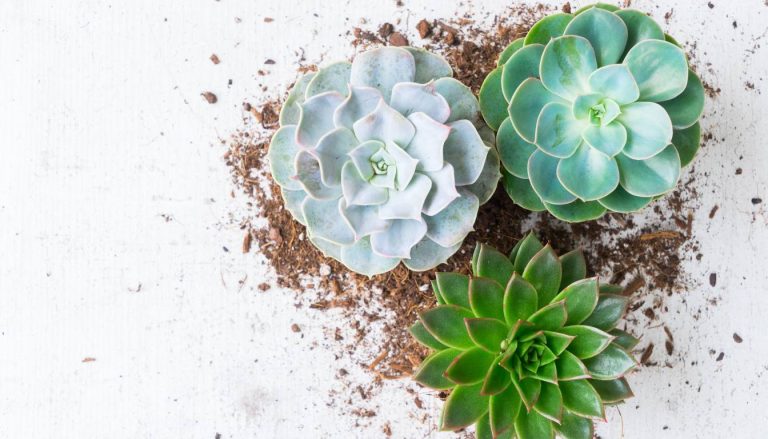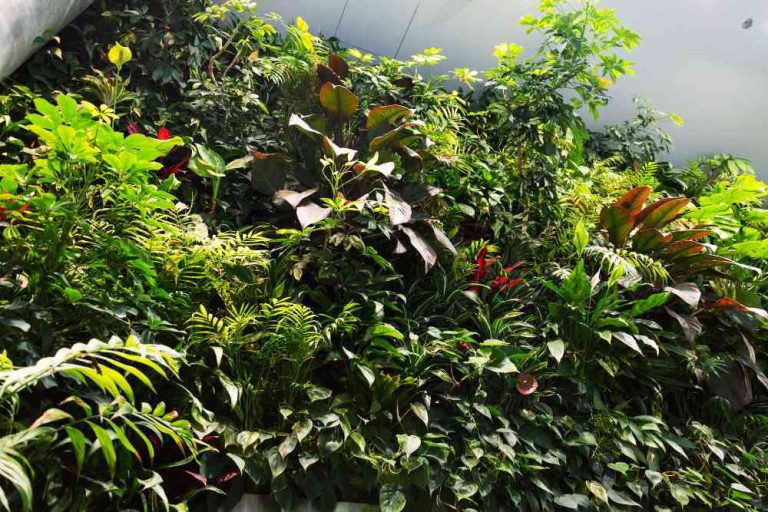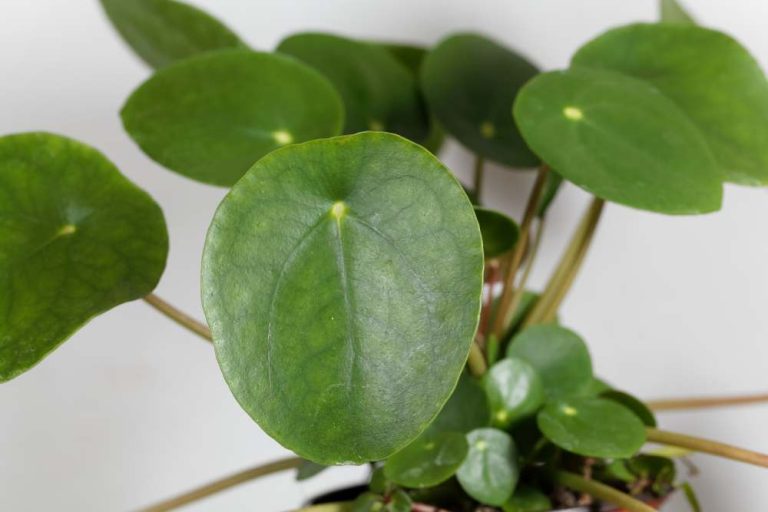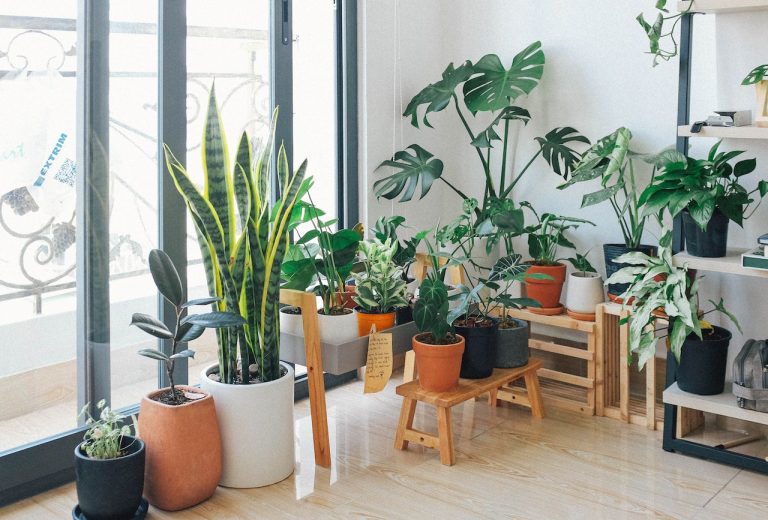10 Indoor Plants That Will Brighten Up Your Home and Improve Air Quality
1. Spider Plant (Chlorophytum Comosum)
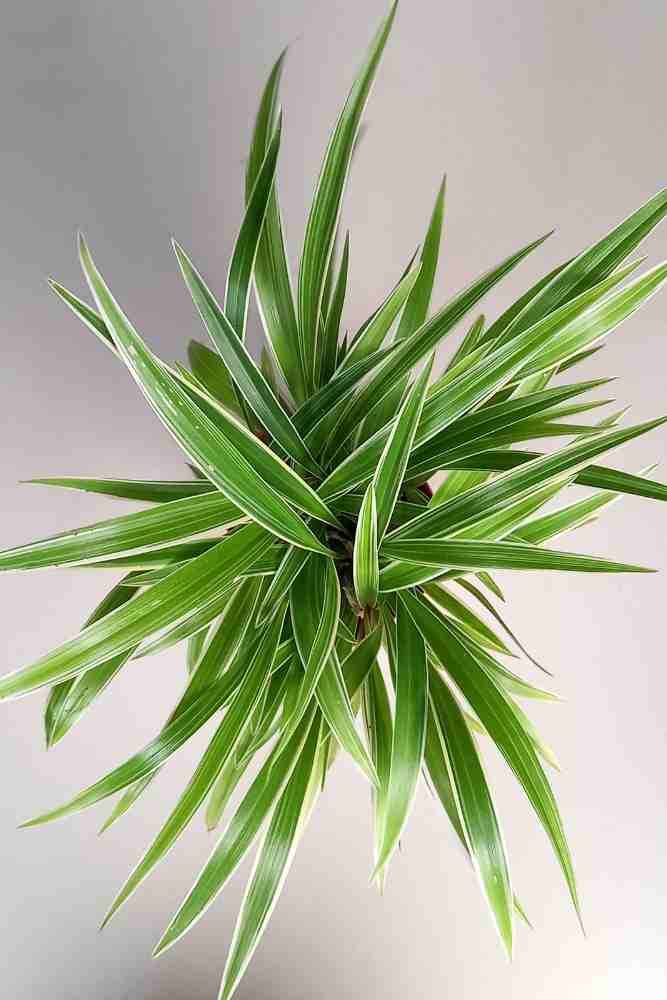
Chlorophytum comosum falls in the Asparagaceae plants family, native to southern Africa. The spider plant is considered one of the most adaptable indoor plants and the easiest to grow because it can grow in a wide range of conditions.
Spider plants are great as indoor plants since they are adding texture and greenery. The plant grows easily in baskets or top columns with arching leaves. Over time, a mature plant can send out plantlets or offsets on long stems that form an impressive hanging display.
Spider plants can be grown even outside in zones where they prefer light shade and well-draining soil. But indoors, they aren’t low-light plants.
They need indirect light, temperature between 55 and 80 ° F, and they love humidity. Therefore, the perfect spot for this plant is near a sunny window in a steamy bathroom, but they’re relatively tolerant to many conditions as long as they have access to some sunlight.
If the temperatures are proper, a summer vacation outdoors in the shade can help an indoor spider plant put on some growth. Spider plants are safe that allow for plants and pets to exist in harmony. The spider plant has the ability to clean the air. It also gives off high levels of beta-carotene and vitamin C, making it a powerful antioxidant.
2. Snake Plant-Mother-In-Low Tongue (Sansevieria Trifasciata)
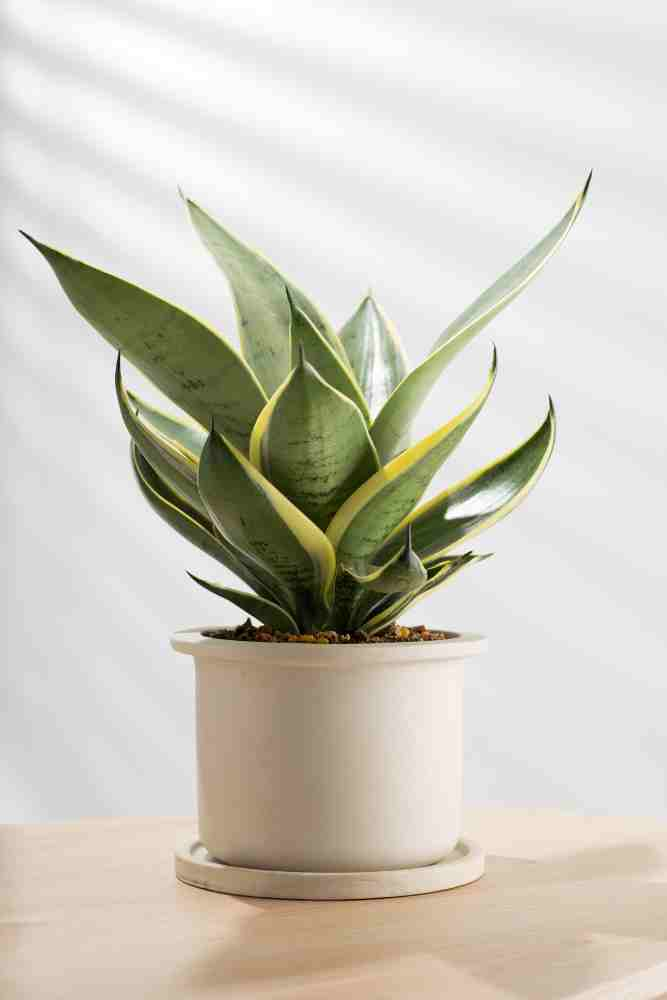
Sansevieria plants are native to Southern Africa, and among the most durable plants, adapted to indoor conditions. The snake plant is a low-maintenance plant known for surviving droughts, making it perfect for newbies living in almost any environment.
It tolerates low light, lack of moisture, and hot or cold air, prefers warm conditions above 50° F, and produces fragrant flowers. Snake plants can filter out nasty chemicals, such as formaldehyde, benzene, xylene, trichloroethylene, and toluene so that you can breathe easily having this in your home.
It contains chemical compounds called saponins that can make dogs and cats nauseous if the leaves are consumed. Partial sunlight is best for snake plants. But it can still grow in darker corners or brighter window areas.
If it grows in a completely shaded place, the plant can dull, and the leaves may become a bit floppy. Place the plant in a pot containing well-drained soil to avoid overwatering because it can cause rotting. Only water the soil when the plant is dehydrated. There are several varieties of snake plants.
Types of snake plant
Bird’s Nest Snake Plant. (The Hahnii)
This plant is relatively small and growing to only 6 inches tall. The leaves form clusters that closely resemble a cup, which is similar to a bird’s nest.
Laurentii Sansevieria.(The Laurentii)
This is also a popular snake plant, known for its green-colored center and yellow margins.
Cylinder Snake Plant.(The Sansevieria Cylindrica)
This has round leaves, and they grow several feet in length. The leaves of this plant reach outward to resemble a crown.
3. Philodendron (Philodendron Scandens)
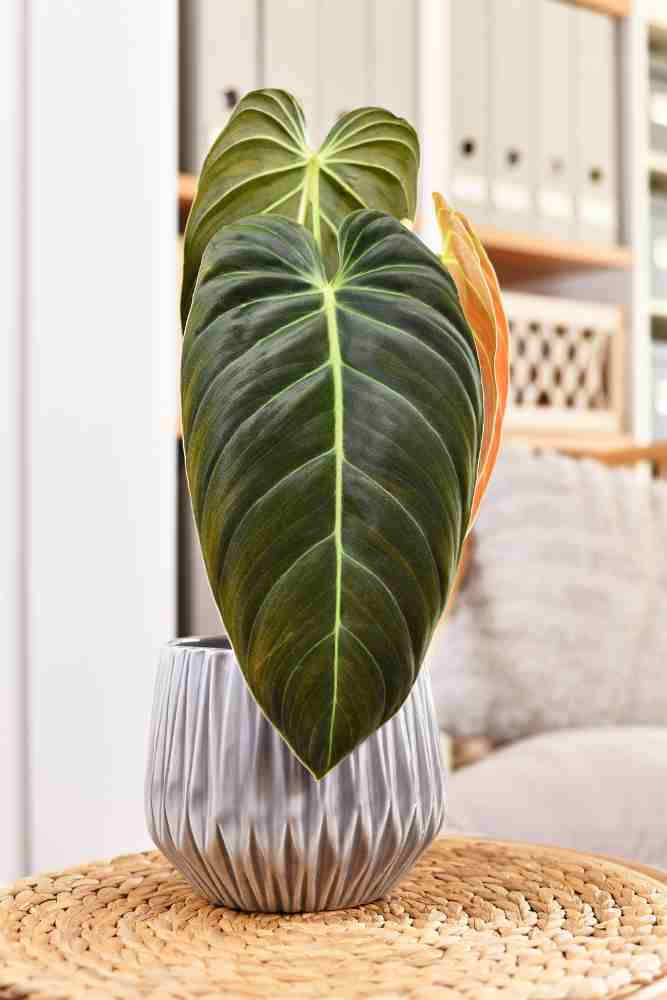
Philodendrons are native to tropical regions of Central and South America, where they ruggedly climb up trees. Many species begin life as vines and then transform into epiphytes (plants that live upon other plants).
Because many young philodendrons are adapted to the low light levels of rainforests, they are popular potted plants for homes and offices. It needs quite low maintenance but is decorative and impresses with many more features that will surprise many plant lovers.
The big leaves make this plant decorative, and it deserves its own special place where it can develop its unique beauty. The Philodendron prefers lightweight, nutritious, and permeable soil. The soil doesn’t have the disposition to condense or dry out quickly.
Do not use cheap garden soil; sadly does have the tendency to dry out quite quickly. High-quality soil is the better choice, as they are enriched with composting or rotten leaves.
And also, you can use garden soil enriched with coconut fibres and flower soil. If well-cared Philodendra can reach a height of up to 3 meters, then it should have enough space, and climbing and creeping help.
Use moss sticks, rough-barked branches other creeping helps from the store or nature. Philodendron loves places like rainforests, half-shaded and without direct sunlight. In rainforests, treetops only let through a small amount to go light, but enough for the plants in the lower regions.
The ideal temperature for this plant is between 65 and 85° F during the day and around 60° F at night. If you grow Philodendron plants outdoors during the summer, bring them inside before the temperatures drop below 50° F. These tropical plants prefer a humid environment but also will tolerate average home humidity levels.
It is best to grow evenly moist soil, but not soggy ones. A good rule is to water when the top inch of the soil is dry to the touch. Never let the soil go bone dry. Overly wet soil can cause root rot. Philodendron stems and leaves are high in calcium oxalate therefore, it can be toxic to both people and animals when eaten.
Types of Philodendrons
Philodendron Scandens
This plant type is a very popular climber with heart-shaped leaves. sometimes multicolored leaves can be seen.
Philodendron Erubescens
This is a vigorous climber. it has reddish leaves and stems.
Philodendron Melanochrysum
This plant is also a stunning climber. it has dark, velvety leaves powdered in bronze.
Philodendron Rojo
This is a hybrid type that stays small and manageable but retains its vigor.
Philodendron Bipinnatifidum
This is a large plant type with deeply lobed leaves. sometimes it is called lacy tree philodendron.
4. Dracaena
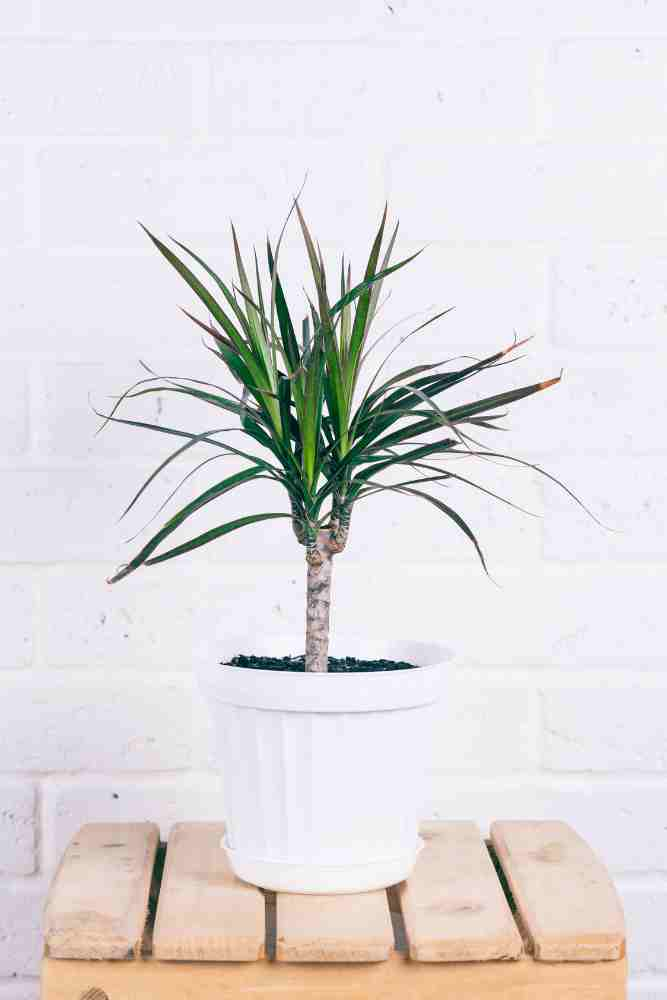
Dracaena, a genus of more than 100 plants, is native primarily to the Old World tropics, especially Africa, and one species is endemic to South America. Plants vary in size, shape, and color, but all share the main characteristic–their long leaves grow outward and up from a central stalk or cane. Dracaenas are easy, low-maintenance indoor plants that will thrive and adapt to almost any environment.
Dracaena prefers temperatures ranging from 65 – 78℉ during the day. Night temperatures can drop about ten degrees cooler, but cold drafts and temperatures below 55℉ will harm the plant. Make sure that you display your dracaena away from any heating or cooling appliances.
It prefers the higher humidity of its natural rainforest habitat. Dracaena requires less water. Keep them hydrated by misting the leaves with water and keeping the soil lightly misted (never soggy) as well with good drainage. Always allow the topsoil to dry out before watering.
Do not overwater, as it may cause root rot. Filtered indoor light (such as through a sheer curtain in front of a sunny window) or a semi-shade spot is an ideal location. Never place a dracaena plant in direct sun, as the rays will scorch its foliage. Toxic to cats and dogs if eaten. Cats may have dilated pupils, and both cats and dogs can present symptoms such as vomiting, excess saliva, and lack of appetite.
Types of Dracaena
Dracaena Marginata
Commonly known as red-edge dracaena or Madagascar dragon tree, Dracaena marginata is an evergreen tree that can grow eight to 15 feet high and three to eight feet wide with proper care. It has stiff purplish-red leaves and slim, curving stalks for trunks.
Since it cannot tolerate low light but is not frost-hardy, it is often grown indoors. They make excellent houseplants because they are drought tolerant and among the more forgiving dracaena plants.
Dracaena Massangeana
Dracaena fragrans massangeana or Dracaena massangeana is commonly referred to as mass cane or corn plant and is widely used indoors. It is inexpensive compared to other houseplants, and the least expensive of the dracaena varieties.
Mass cane is characterized by its thick, woody canes and long strap-like leaves. Although moderate natural lighting is ideal, it is tolerant of low light conditions. Dracaena massangeana grows slowly to fit in a particular space for a long time without requiring much maintenance.
Dracaena Reflexa
Commonly known as the song of India or pleomele, Dracaena reflexa is the most common of the dracaena species. As one of the most visually striking houseplants, the leaves are its main attraction.
You can’t miss the yellow stripes featured on the narrow pointed leaves of this houseplant. This adaptable houseplant thrives indoors or in a partially shady outdoor area, like a patio.
5. Calathea – Peacock Plant (Calathea Makoyana)
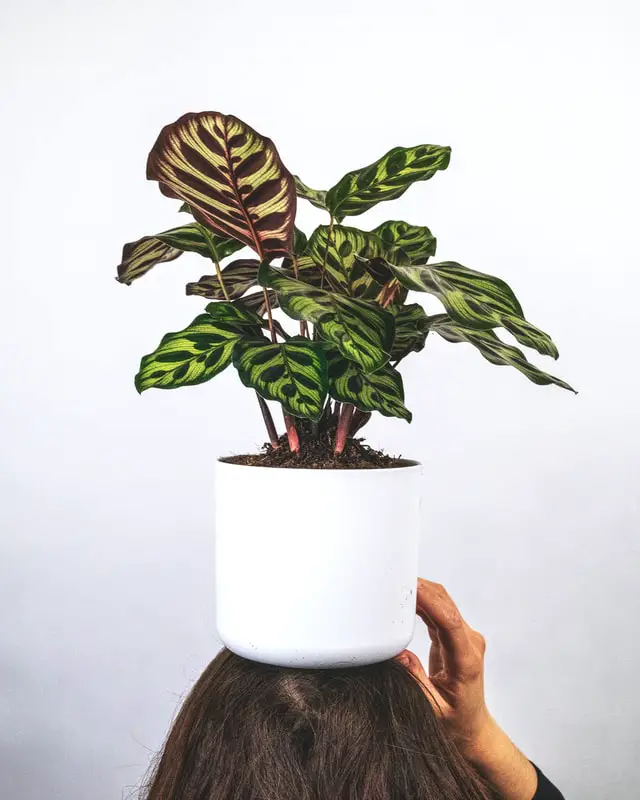
Peacock plant is native to the tropical forests of Brazil, found growing under the shade canopies of tall, tropical trees. this is one of the most ornamental indoor plants of the popular Calathea genus. As this Peacock plant has all the elegance and beauty of a Peacock’s tail, it has been given its rather glorious name. From the middle of the leaf to the outer edges of leaves are in pale green with a dark green feathered effect.
Newly grown leaves rolled up and showed off their pinkish-red undersides, giving it another splash of color. The plant should be placed in low to moderate sunlight to avoid the leaves becoming duller and less vibrant. Indirect sunlight is best for this species.
Because the direct sun will damage the leaves, low light will slow growth; therefore, a bit of balance is required. Ideal temperatures should be between 60 – 75 ºF. Avoid sudden drops because that will affect growth and cold drafts.
Always use soil that holds moisture and drains well. Calatheas need humidity in their natural climate. Leaf tips become browning when the humidity is low from dry air. This tropical native is non-toxic to people, cats, and dogs.
6. Peace Lily (Spathiphyllum)
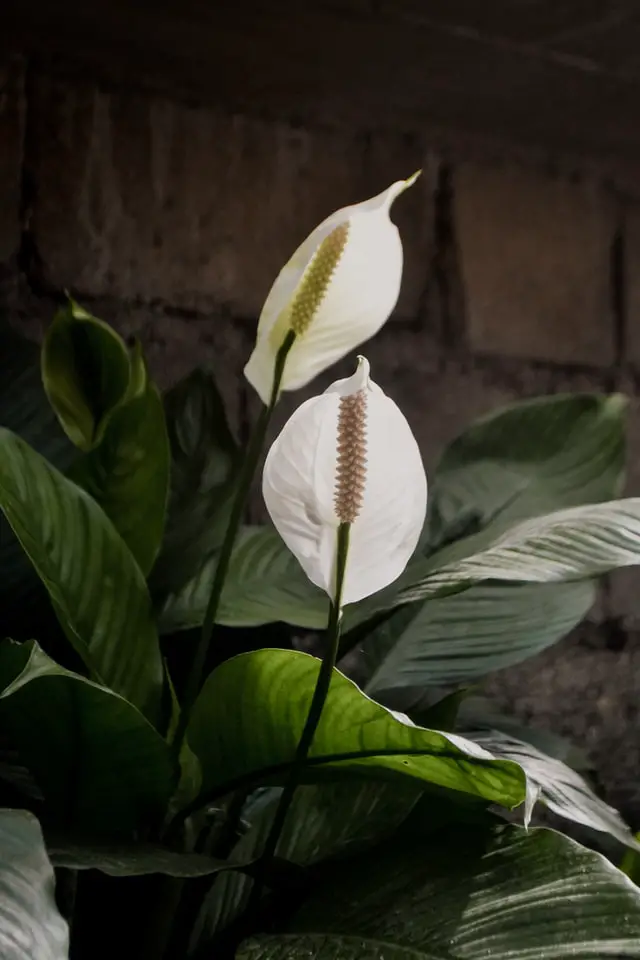
The peace lily is native to the tropical rainforests of America. This plant is a vibrant and graceful perennial plant that adds life to any space, even outdoors and indoors. The standard peace lily plant can grow to 24-40 inches, and deluxe plants can grow to 32-50 inches. Peace lilies are not considered as true lilies (Lilium spp.) but rather a member of the Araceae family.
Peace lilies are indisputably terrific as houseplants. Small varieties look attractive on a tabletop. Bigger varieties can occupy a nice-sized spot on the floor. This plant filters more indoor pollutants than most other plants, so they are great for bedrooms or other frequented rooms. Peace lilies can also be grown outdoors, even in warm climates, and can tower as much as 6 feet high. The soil must be kept moist, but if it is soggy, which will cause the leaves to turn yellow.
Peace lilies need rich, loose potting soil containing plenty of organic material. Avoid direct sunlight. Give them lots of bright filtered light. If leaves become curled and pale, it generally indicates that the plant is receiving too much light. Scorched leaves indicate too much direct sunlight.
In both cases, the plant should be moved to a shadier location. They like warm conditions but will react badly if exposed to temperatures below 40° F. The ideal temperature for the peace lily plant is 65 to 80° F. Low water needs. Can tolerate underwatering better than overwatering; keep moist but do not let it sit in water.
The peace lily is a mildly poisonous plant. All parts of the peace lily plant contain calcium oxalate. It is a substance that may cause respiratory and stomach and irritation if ingested in large amounts. So then Keep peace lilies out of reach of small children and pets.
Types of Peace Lily
S. ‘Sensation’
This is the largest of the peace lily variety. it reaches up to 6 feet in height and has broad, 20-inch-long leaves.
S. ‘Mojo’
This is a striking, large plant with vibrant green leaves.
Spathiphyllum ’Power Petite’
This is a small variety. which is growing to only about 15 inches in height.
S. ‘Mauna Loa Supreme’
This is a very common variety. growing to 3 to 4 feet tall. leaves up to 9 inches wide.
S. ‘Starlight’
This variety Has narrow leaves with wavy margins. hence also known for heavy, multiple blooms, with as many as 20 flowers on a single plant.
S. ‘Golden Delicious’: this variety
Features new growth with a stunning golden-green color
7. Prayer Plant (Maranta Leuconeura)

Prayer plant (Maranta leuconeura), also known as praying hands native to the New World tropics. Prayer plants have fine and shallow roots and are prone to root rot. A planting mixture that includes peat moss, sand, and loam helps ensure adequate drainage.
The prayer plant needs indirect sunlight. The sunlight will scorch the plant’s leaves, or the leaves will develop blotches or patches and fade in color intensity; hence never set the plant in direct sunlight.
In the winter season, when the plants go into the dormancy period, provide them with bright light to maintain growth. As long as they’re well-draining, Prayer plants can grow in a variety of soils.
Typically, a traditional potting mix works fine for planting, but you can make your own by combining one part loamy soil, two parts sphagnum peat moss, and one part perlite or coarse sand together. The soil should be acidic (pH of 5.5 – 6.0). Add gravel or rocks to the bottom of the pot to improve drainage, and be sure that the pot has a drainage hole.
A prayer plant likes normal household temperatures between 60 and 80 °F. Prolonged lower temperatures can damage the leaves and they will drop from the plant. Prayer plants prefer a very humid environment.
Prayer plants can tolerate low sunlight conditions; they are also best in bright and indirect light. Prayer plants don’t like direct sunlight. Too bright light can bleach your prayer plant’s leaves.
Types of Prayer Plant
There are around 40-50 different prayer plant species
Kim Prayer Plant (Maranta Leuconeura ‘Kim’)
Kim prayer plant variety is a fun variety. That has green leaves, purple spots, and creamy-white streaks.
Marisela Prayer Plant (Maranta Leuconeura ‘Marisela’)
Marisela prayer plant variety is a hardy indoor plant with dark green leaves and lighter green markings between the veins.
Black Prayer Plant (Maranta Leuconeura var. leuconeura)
The black prayer plant is an especially good indoor plant that has silvery-blue leaves dotted with purple and edged in olive green.
Green Prayer Plant (Maranta Leuconeura)
The green prayer plant is a classic variety. The green leaves have purple markings between the veins.
Red Prayer Plant (Maranta leuconeura var. erythroneura)
The red prayer plant is a lovely indoor plant that shows off dark green leaves, purple markings, and rich red veins.
8. Pothos (Epipremnum Aureu)
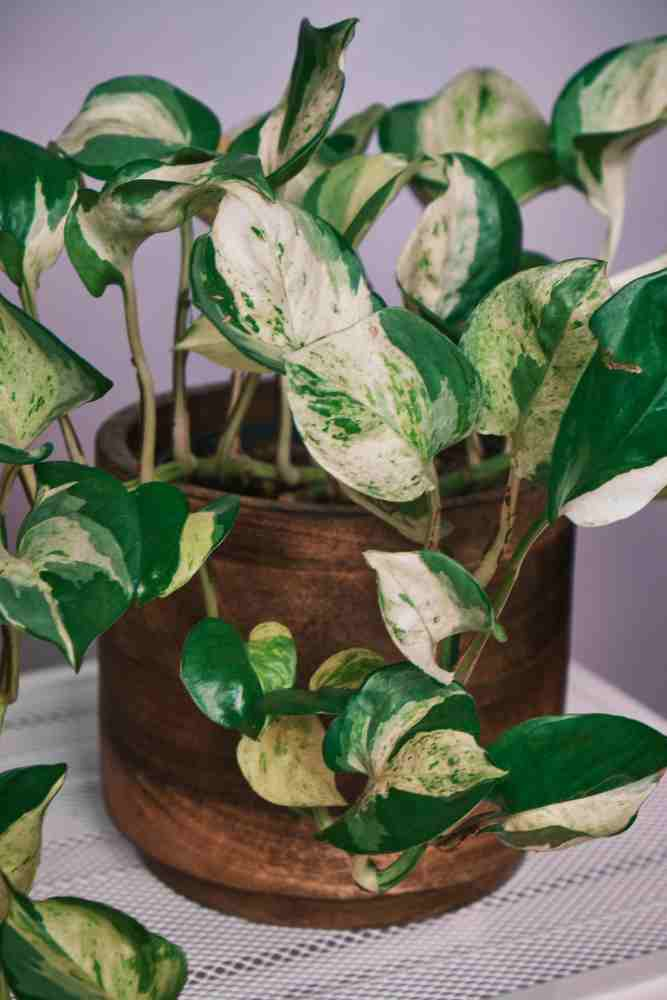
Epipremnum aureum, commonly called golden pothos or devil’s ivy, is native to the Solomon Islands. Fast-growing plant. Trails will continue to grow for anything up to 20m. You can cut it back to maintain the desired length. Smaller plants grow up to 12cm grow pots are young cuttings and not fully established plants. Pothos prefer low light to bright light. Direct sunlight will burn foliage.
Although pothos will tolerate low light, they will have more leaves and better variegation if kept in bright light. Long spaces between leaves indicate pothos is not getting enough sunlight. This plant thrives under fluorescent light, making it an ideal office plant. It Prefers higher levels of humidity but will tolerate normal conditions too.
A reasonable warm temperature is needed—no lower than 50°F in Winter and ideally between 59 and 77°F in the other seasons. Water Pothos regularly during the growing seasons and always a lot less in the Winter season. But overwatering needs to be avoided.
Mildly toxic to humans, harmful to pets. Keep away from children and animals.
Types of Pothos
Marble Queen Pothos
Marble Queen This cultivar can easily find. It does grow slowly, and this one has contrasting, stunning marbled white and green foliage.
Golden Pothos
The most common cultivar. This is a mustard-variegated and mid-green plant. This plant can tolerate and adapt to varied light conditions. Sometimes it is hardy and takes poor light and erratic watering.
Neon Pothos
This variety has massively increased in popularity lately. Wonderfully vibrant foliage that has the colors of yellow and green, it’s striking and bold but also very pretty. This plant is striking and bold but also very pretty. This plant helps scrub the air clean of toxins.
N’Joy Pothos/Pearls and Jade
The leaves have the familiar green but are blotched throughout with white sections, which add contrast and increase the plant’s attractive look. This plant variety is not the fastest-growing cultivar, but this is less accommodating of poor watering. If let it dry out too much, it will droop.
9. Chinese Evergreen (Aglaonema Modestum)

Chinese evergreen is a decorative plant native to Asia. These plants are slow-growing, and attractive, and make excellent indoor foliage plants that can be planted and cared for year-round.
They all have large, narrow, and glossy oval leaves on short stems and flowers (on older plants) that bloom in spring or summer. The plant does well in good indirect light and prefers high humidity but will tolerate dryer air. Keep the potting mix of the plant moist from spring to fall.
It prefers a reduction in watering during the winter and does not require a winter dormancy period but removes flowers and fruits to provide direct energy to plant growth. This is an excellent plant for low-sunlight indoor locations.
It can also be used in the outdoor plant as a filler plant or low hedge in warm regions. You can grow it in an Asian or shade garden, in a container, beside a patio or walkway, or in a woodland setting.
Temperatures ranging between 65-80 ºF are ideal for plant growth. Dark patches on the leaves can be developed if the temperature is lower than 60 ºF. Leaves of this plant begin to curl, and the edges turn in brown; if the temperature is probably too cold or low drafts may be affecting the plant. Average to high room humidity is suited. Artificial heating in the room will improve the plants’ growth and prevent leaves from becoming dry and shrilling.
10. Ferns
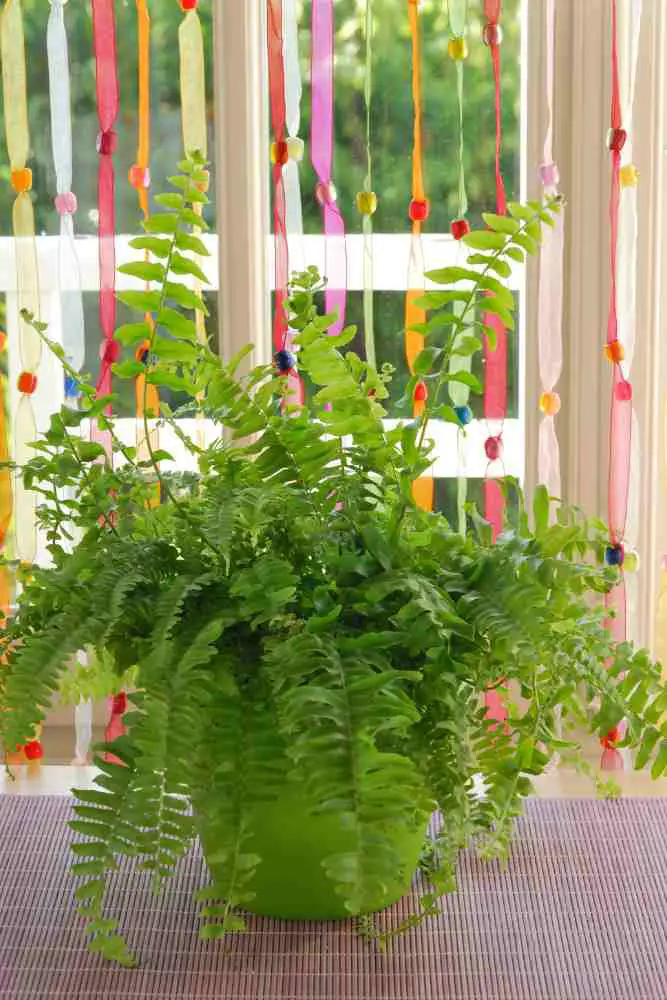
Ferns are plants with no flowers. They generally reproduce by producing spores. Ferns have roots, stems, and leaves similar to flowering plants. But unlike flowering plants, ferns do not have flowers or seeds. Instead, ferns usually reproduce sexually by tiny spores or sometimes can reproduce vegetatively, as exemplified by the walking fern.
Require low sunlight / grow in the shade. Leaves tend to grow out and provide great coverage of hardware. Ferns are slower to grow but help to add texture to the walls. There are over 9,000 species of ferns. Low water needs. Keep soil moist.
Types of ferns
Hart’s Tongue Fern (Asplenium Scolipendrium)
The leaves are bright, light green, very glossy, and exotic looking. It forms a beautiful rosette with its arching leaves, which are not divided but look like little snaps or tongues. On the underside of this fern’s leaves, the spores form and become brownish.
You can easily grow it in containers; It will bring a tropical mood to any terrace or patio and bedroom. It adapts to various types of soil as long as it keeps it moist and is well-drained. Also, it grows in alkaline or neutral soil (not acidic), be it loam, clay, chalk, or sandy soil.
Delta Maidenhair (Adiantum Raddianum)
It is a small but charming and elegant fern. This fairly small Fern variety. It will produce an abundance of fronds with purple to black stalks and leaves. Delta-shaped will create a wonderful effect of dappled light and rich foliage.
It can grow in pots and hanging baskets. It will bring a touch of joy to desks, tables, and bookshelves. If it grows indoors, however, keep it away from drafts. It will need to grow in fertile, humid, and well-drained loam, whether alkaline or neutral.
‘Grey Ghost’ Lady Fern (Athyrium Niponicum ‘Grey Ghost’)
This species of ferns varieties are absolutely perfect for modern, minimalist gardens. This fern can use as undergrowth for roses and shrubs. It has silvery-white leaves, and the midrib adds to the visual effect of the shiver leaves since it is actually reddish-purple.
It should be grown in clay, sandy, or loam soil, neutral or acidic. The soil must be well-drained and kept humid. It can tolerate wet soil as well as clay soil.
Hen And Chickens Fern (Asplenium Bulbiferun)
A fern variety with completely different foliage. The fronds are light green and divided into many thin, almost needle-like parts. Arch very elegantly and may remind a few pine branches.
The feathery nature makes it ideal as a decorative underbrush or to accompany flowering plants in flower beds and borders and as a light but rich presence in patios, on terraces, and indoors, in pots or hanging baskets. This fern will adapt to almost any well-drained and moist soil. Soil can be loam, chalk, clay, sandy soil, alkaline, neutral, or acidic.
Bird’s Nest Fern (Asplenium Nidum)
It has tongue-shaped, glossy, and strong-looking fronds. Leaves have a dark midrib, and they curl at the top. Wavy margins add a dynamic movement to the appearance of the fronds. They also tend to grow upright.
The ensemble looks like a nest since they all grow from a common point in the center; these ferns need loam or sandy soil, well-drained and kept humid, with a pH that is either acidic or neutral.
- 20+ Chic Boho Bedroom Ideas for a Cozy and Stylish Retreat - June 20, 2024
- 12+ Modern Boho Living Room Ideas to Create a Unique Oasis - June 10, 2024
- 10 Stunning Canopy Bed Ideas for a Dreamy Escape - May 16, 2024

